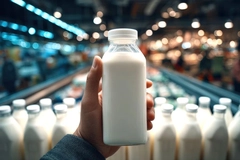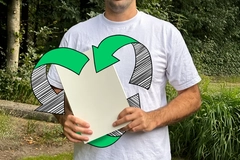Revamping the global food system with latest shelf life-extending technology

28 Aug 2024 --- Utilizing packaging that can increase shelf life, even by one day, can cut food waste and have a substantial impact on methane and carbon emissions reductions. We take a look at the latest tech developments in this evolving space.
Kate Berry, head of marketing and product at Colpac, tells Packaging Insights that foods’ shelf life extension is particularly relevant to the European market, where long distribution chains are prevalent and food is often transported for several days to reach its point of sale.
“As a result, demand is increasing for packaging that can keep food fresh for a few days, as well as sealing solutions which can extend food shelf life even further,” says Berry.
Thomas Schulz, vice president for Group Marketing and Communication at Constantia Flexibles, affirms that effective packaging is integral to reducing food waste by extending the shelf life of products, improving portion control, providing essential information, protecting food from damage, optimizing supply chains and enhancing consumer convenience.
“These factors collectively minimize food loss and waste throughout the entire food system.”
Heat-seal technology
Colpac offers various packaging solutions to support food waste reduction, explains Berry.
“Several of our products are in a pot and lid format, the lids for which are tight-fitting to reduce air ingress and keep food contents fresh. Examples include our UK-manufactured multi-food pots and our popular Stagione range. To further increase shelf life, these ranges can also be heat-sealed using suitable films and machinery.”
 An example of Colpac sandwich packs in suitable sealing machinery to extend product shelf life (Image credit: Colpac).Berry adds that other options include heat-seal sandwich packaging and heat-seal salad boxes, both of which can extend shelf life further.
An example of Colpac sandwich packs in suitable sealing machinery to extend product shelf life (Image credit: Colpac).Berry adds that other options include heat-seal sandwich packaging and heat-seal salad boxes, both of which can extend shelf life further.
“Heat-sealing is an ideal solution for foodservice operators and packer processors and can increase the shelf life of freshly packed sandwiches, pots of soup or porridge or trays of pasta salad to more than three days depending on food type,” she says.
“For customers who would like to extend shelf life beyond this, we offer Modified Atmosphere Packaging (MAP). By removing the oxygen within a pack and replacing it with an inert gas mix, MAP can slow down the spoilage process.”
MAP technology enables manufacturers to distribute products over a larger network, reduce delivery frequency, sell a wider product assortment and simplify production.
“To complement our heat-seal packaging and MAP ranges, we offer a range of food packaging machinery. This includes various options, from table-top sealing systems that are ideal for delis or cafes to high-speed systems suitable for food manufacturers,” explains Berry.
Material and energy optimization
Meanwhile, Constantia Flexibles’ latest solution to avoid food waste, EcoPeelCover, has earned the company the German Packaging Award for its innovative approach to material efficiency.
“By downgauging the material, EcoPeelCover is now the thinnest lidding solution on the market, offering superior puncture resistance while significantly enhancing material and energy efficiency,” explains Schulz.
“This advanced packaging solution not only provides optimal protection against water vapor and oxygen, preserving the quality of dairy products, but also contributes to reducing food waste by ensuring longer shelf life and minimizing material use.”
Good design and testing needed
Several technical challenges can arise when extending product shelf life.
Berry explains that first, the ingredients used need to be suitable. “Food producers may need to adapt recipes to ensure that their ingredient profiles remain fresh over longer periods, even within specifically designed packaging.”
“Using longer shelf life packaging can reduce the need for artificial preservatives, which is ideal for retailers looking to eliminate additives, but food contents should be tested in each instance,” she highlights.
 Constantia Flexibles’ EcoPeelCover for dairy company Bauer (Image credit: Constantia Flexibles).Secondly, she notes specialized machinery is required to produce and close MAP or heat-seal packaging. “Different machinery and tooling are often required for different packaging formats, which can need significant investment.”
Constantia Flexibles’ EcoPeelCover for dairy company Bauer (Image credit: Constantia Flexibles).Secondly, she notes specialized machinery is required to produce and close MAP or heat-seal packaging. “Different machinery and tooling are often required for different packaging formats, which can need significant investment.”
“This challenge can be overcome by considering machinery and tooling early in the packaging development process and working with an experienced organization such as Colpac to design with the available machinery in mind.”
“All of these challenges can be overcome through considered product design and by conducting thorough product testing to ensure all stages of the process are effective and an airtight seal is achieved.”
Material downgauging to cut expenses
Meanwhile, Schulz notes that while advanced packaging can be costly, innovations like material downgauging help reduce expenses without sacrificing performance.
“Additionally, it is important to balance extending shelf life with preserving the taste, texture and appearance that consumers expect. Environmental impact is another consideration, and sustainable packaging solutions can help address this.”
“Overall, overcoming these challenges involves using advanced materials, optimizing packaging design and ensuring careful management throughout the supply chain,” adds Schulz.
Currently, Constantia Flexibles’ R&D is focusing on creating packaging materials that support a circular economy by being recyclable or compostable without compromising the essential barrier properties that protect food.
“We are innovating mono-materials with strong barrier qualities to simplify recycling while ensuring that our sourcing practices are ethical and sustainable. We’re also taking a life cycle approach to minimize environmental impact, recognizing that smaller packaging formats can help reduce food waste,” says Schulz.
“Rigorous testing is central to our efforts, ensuring our materials meet both high-quality and sustainability standards, all while adhering to strict food safety regulations.”
By Natalie Schwertheim











